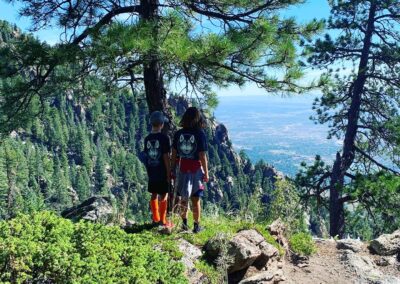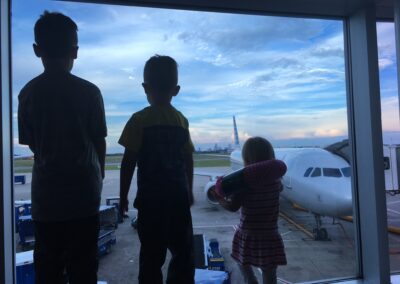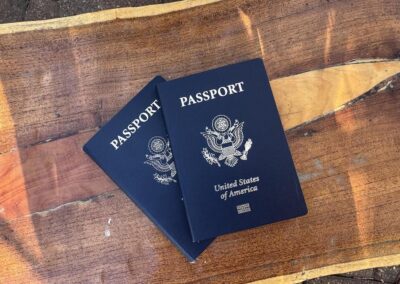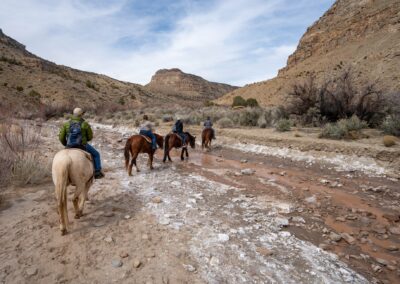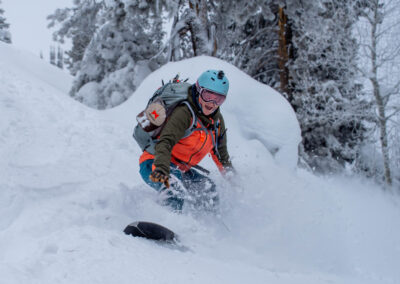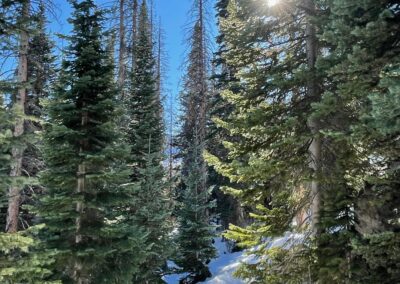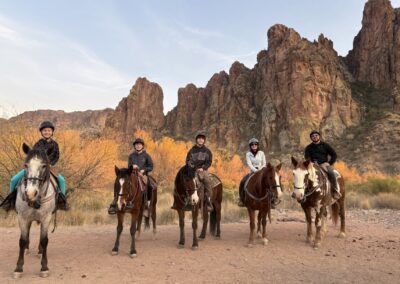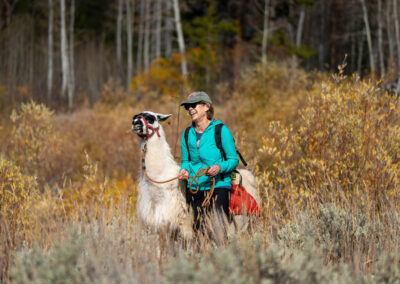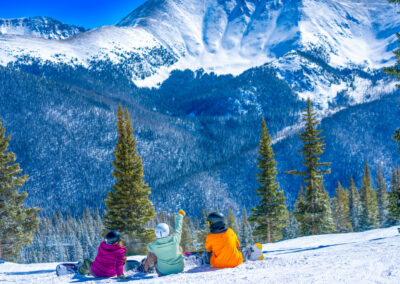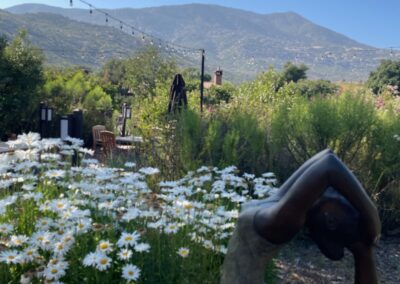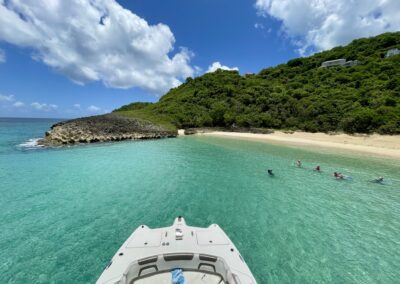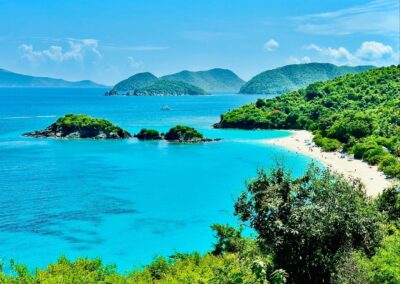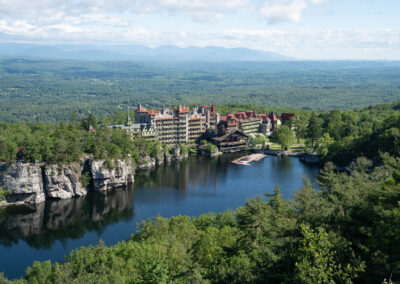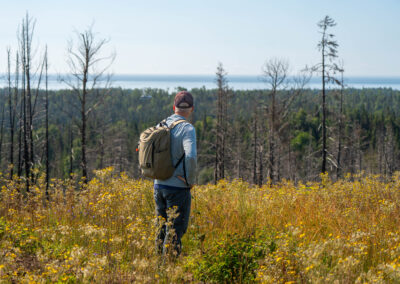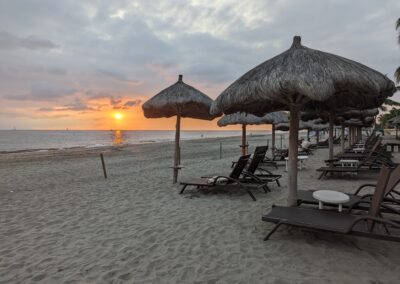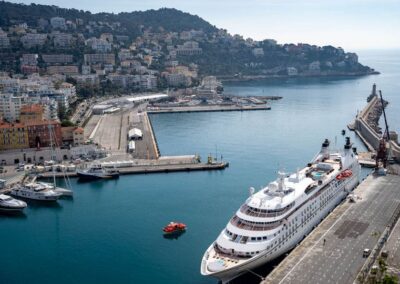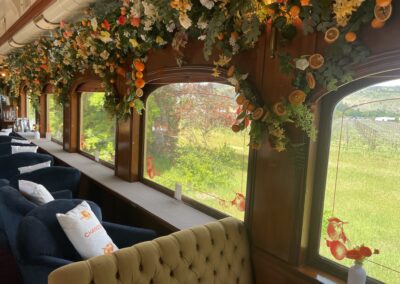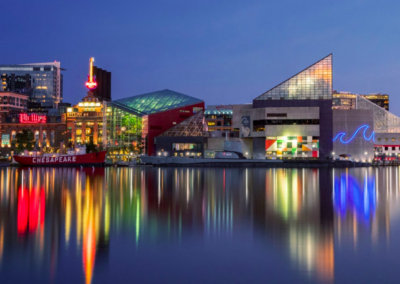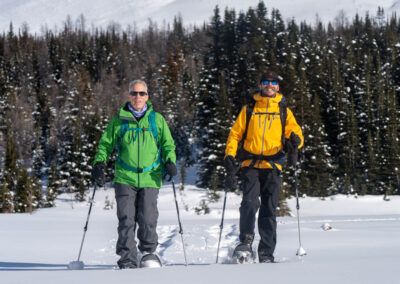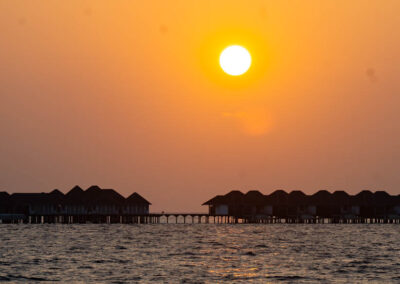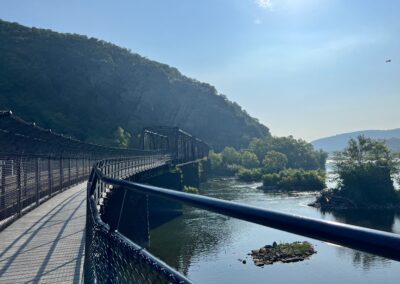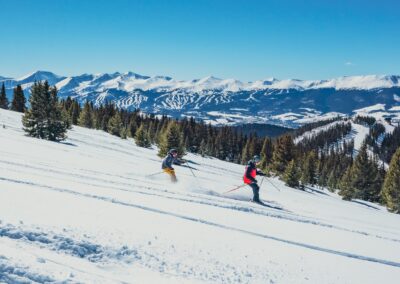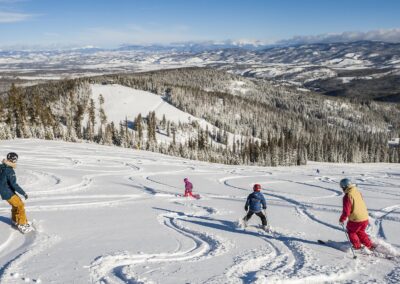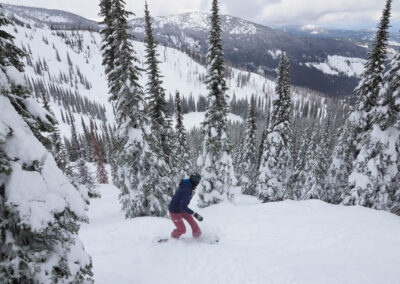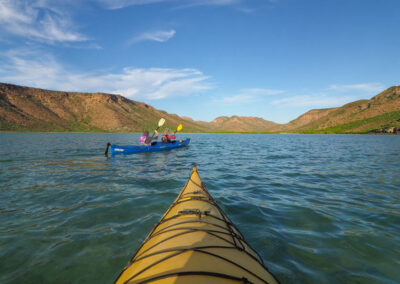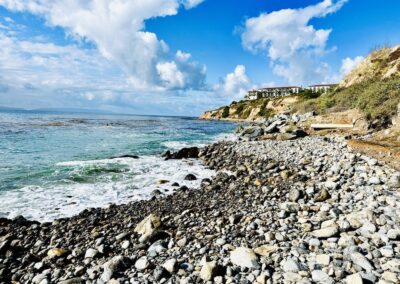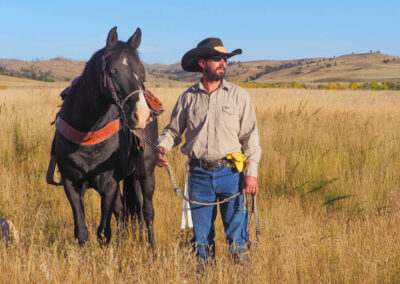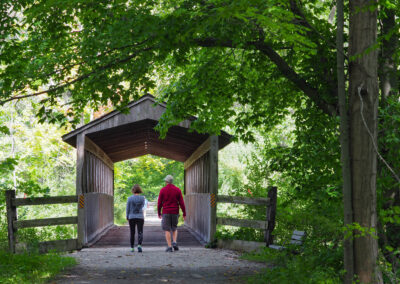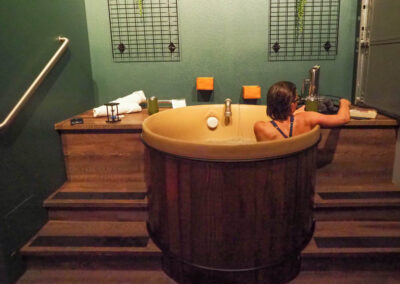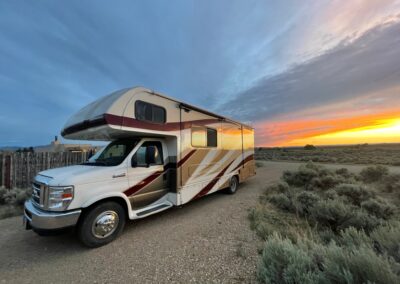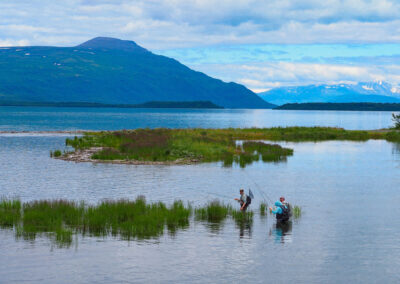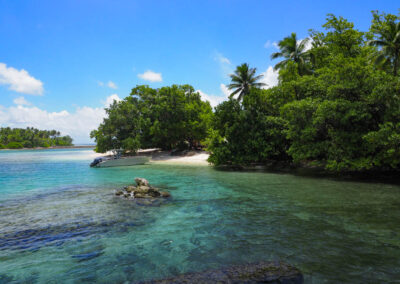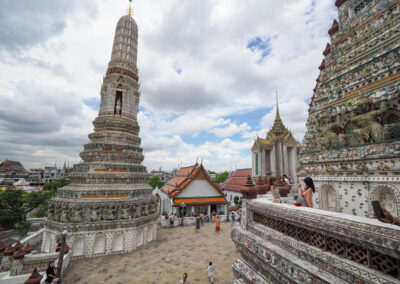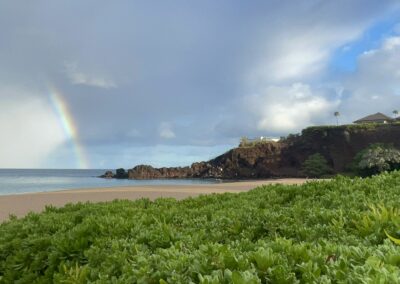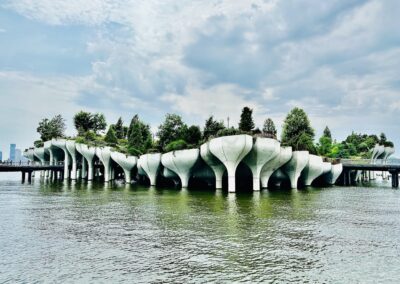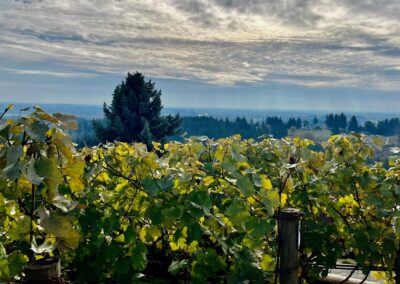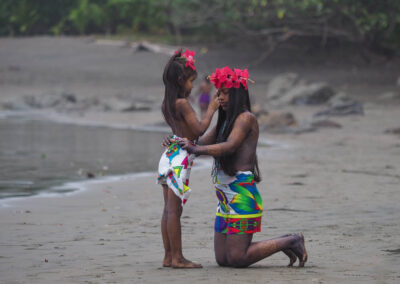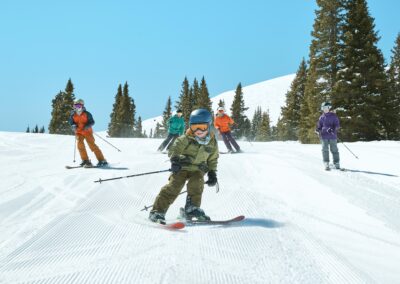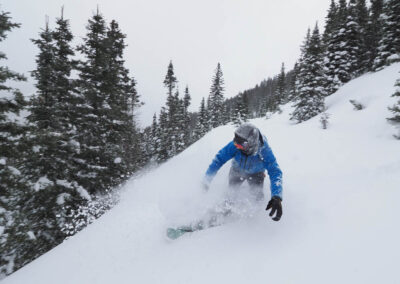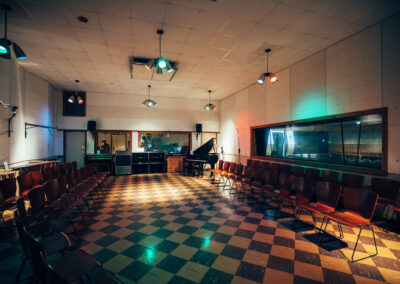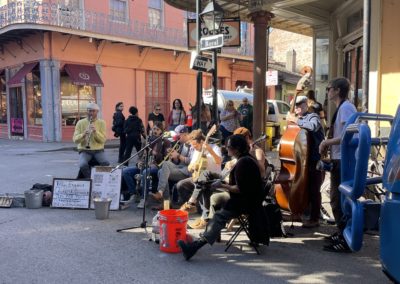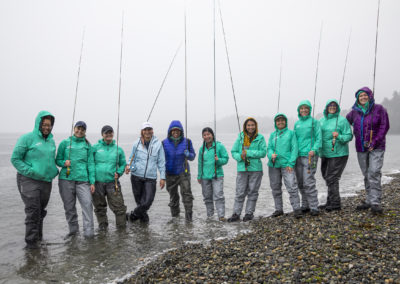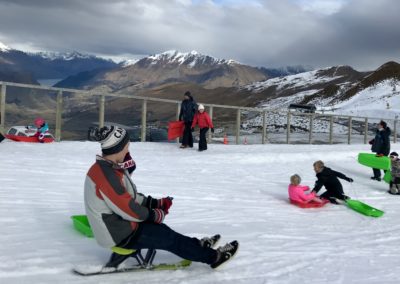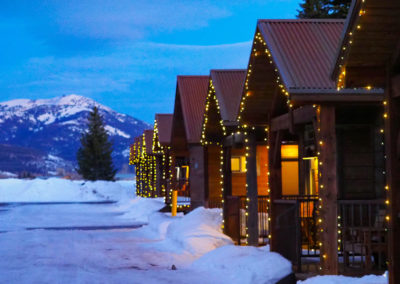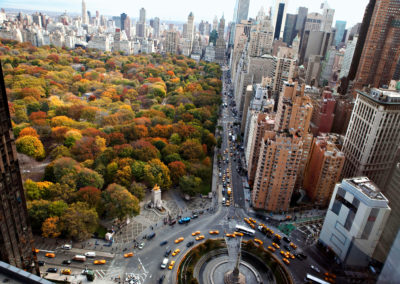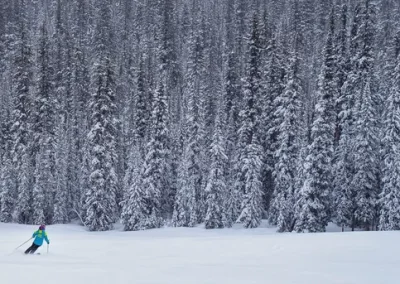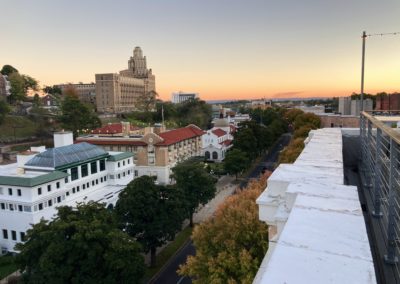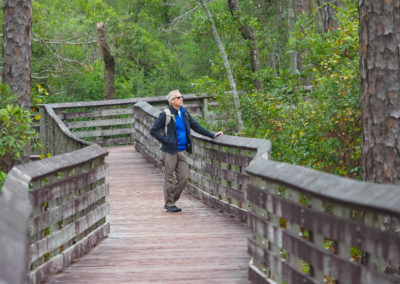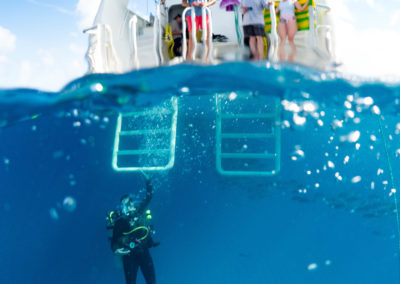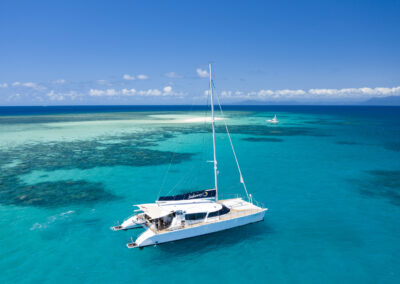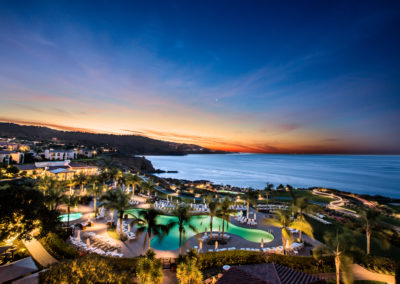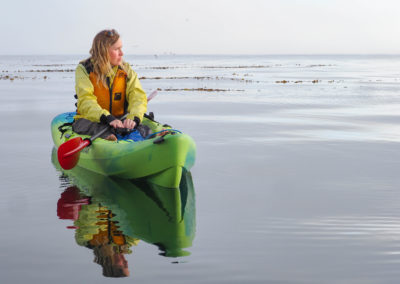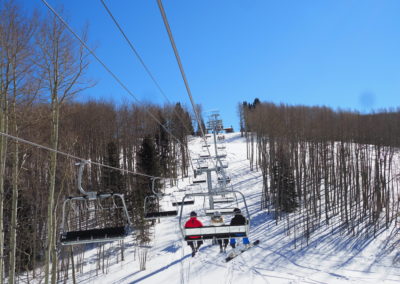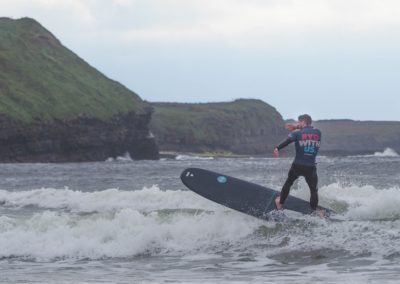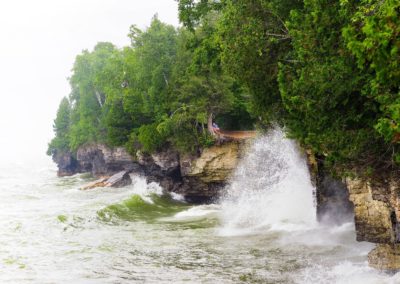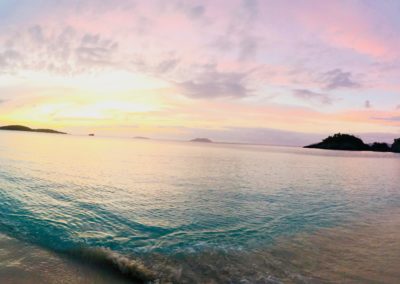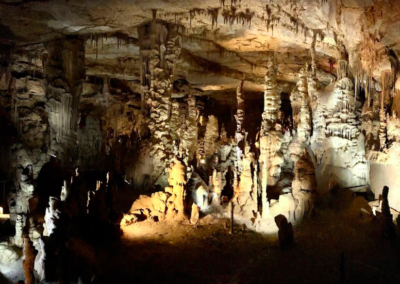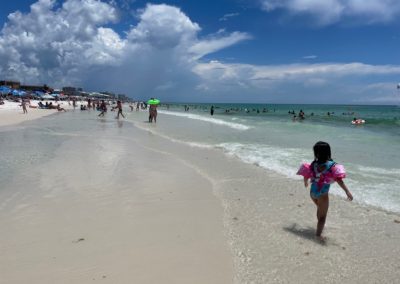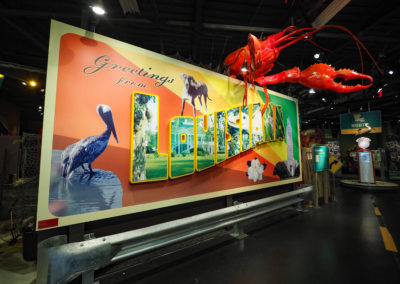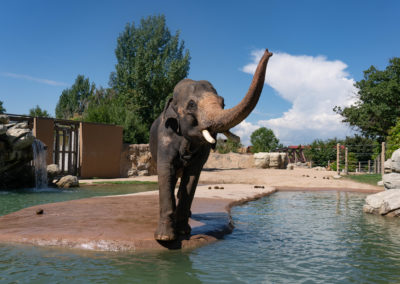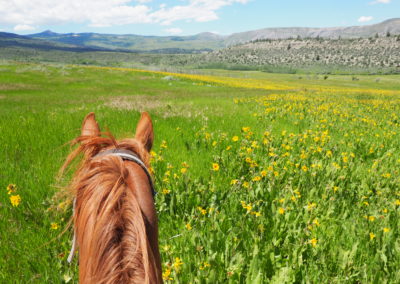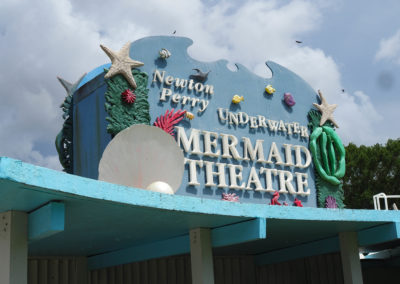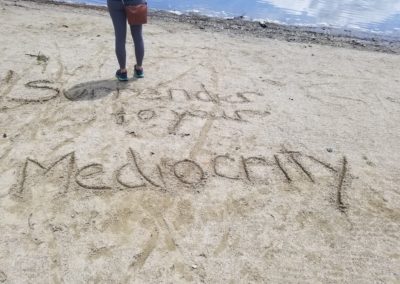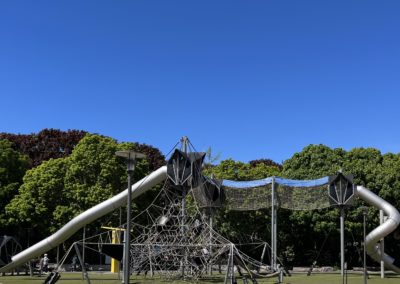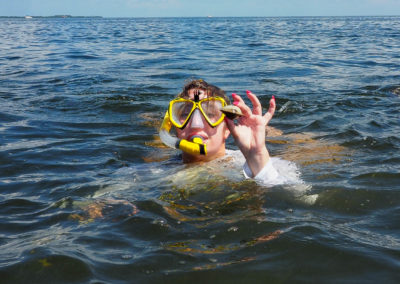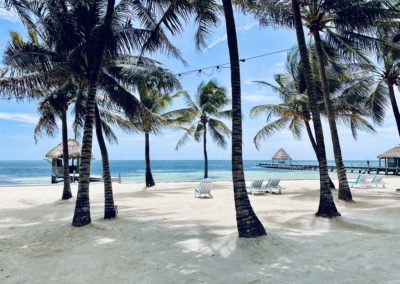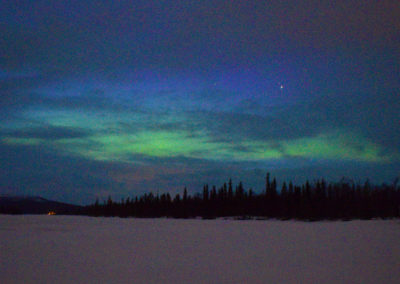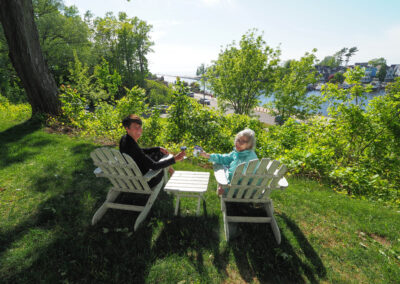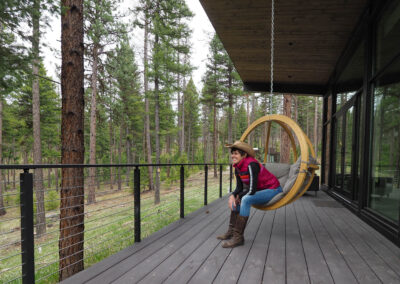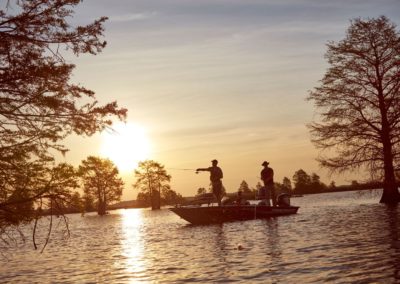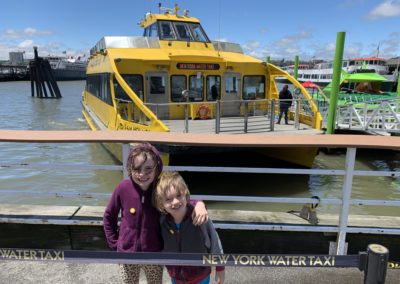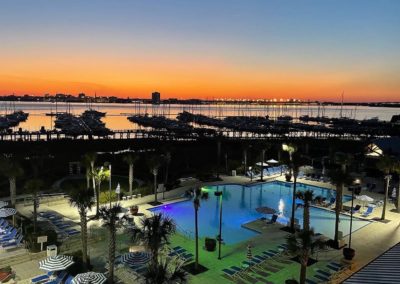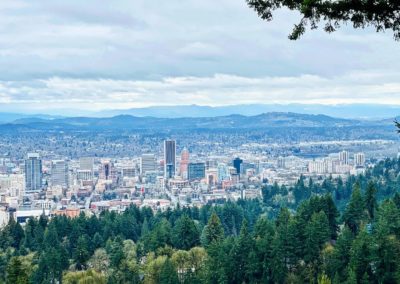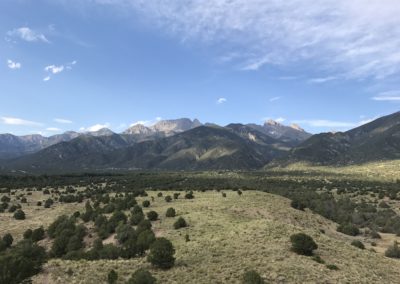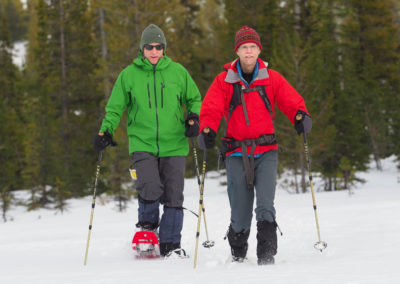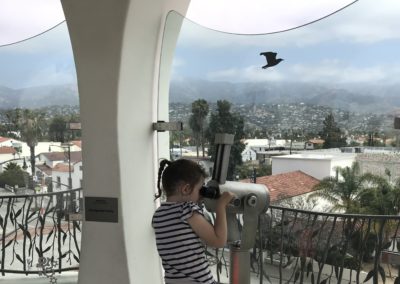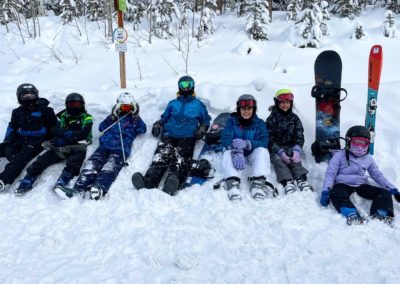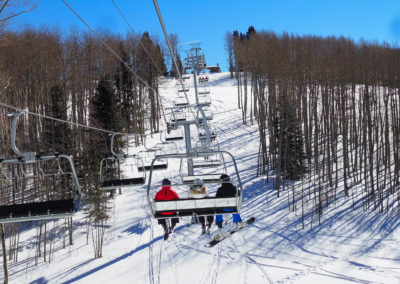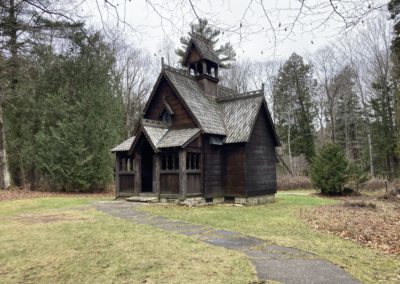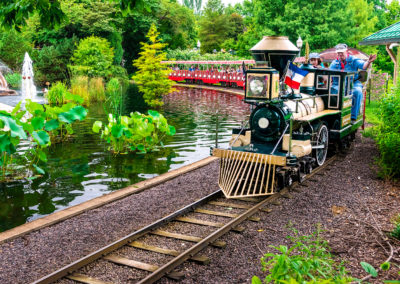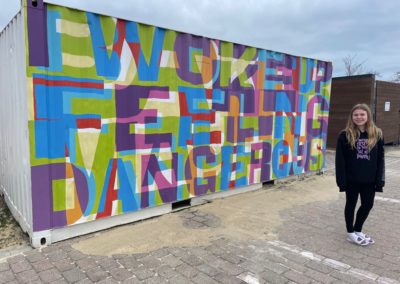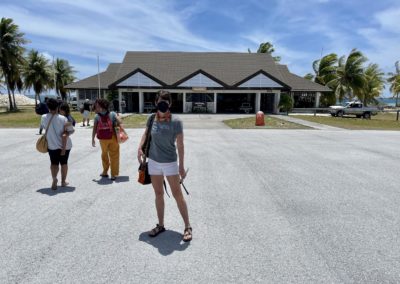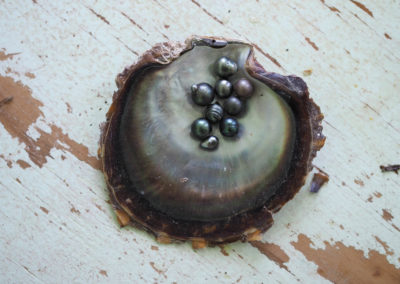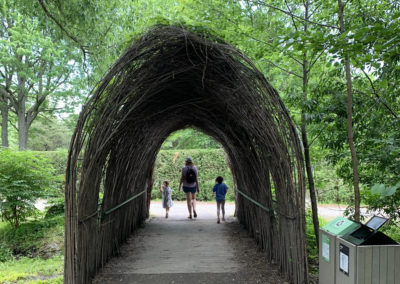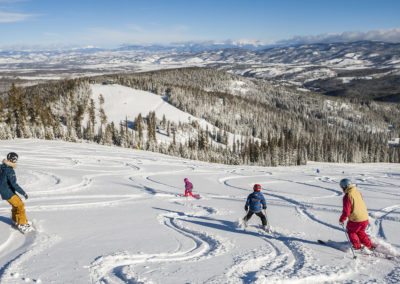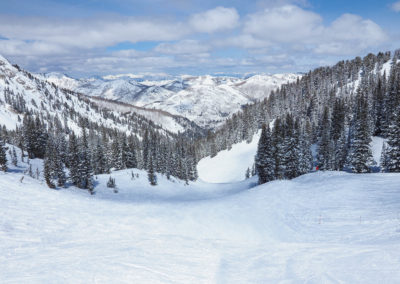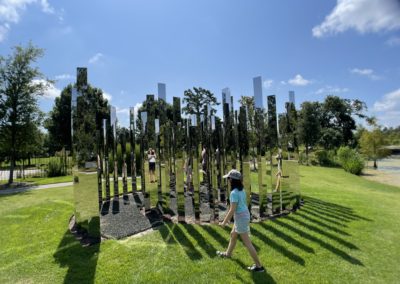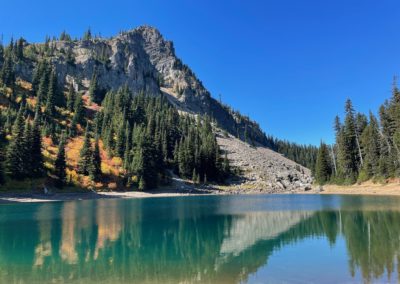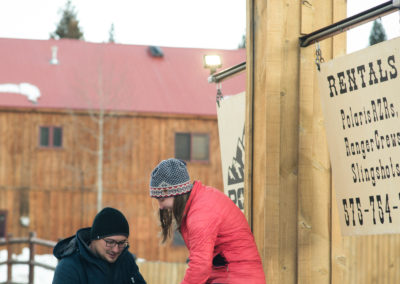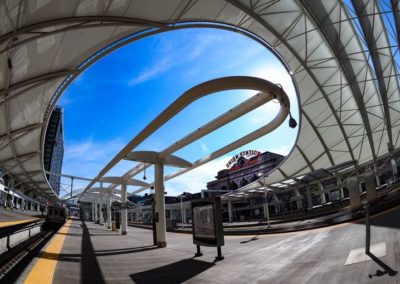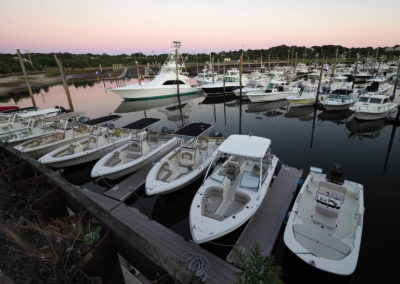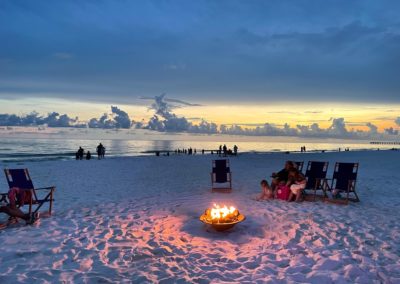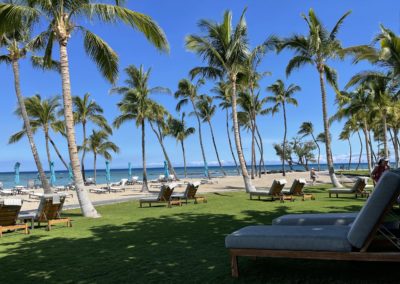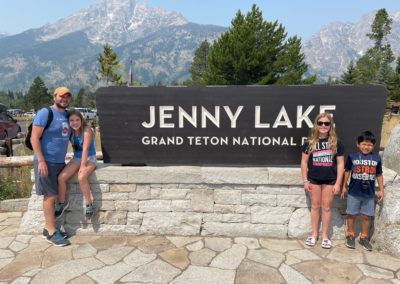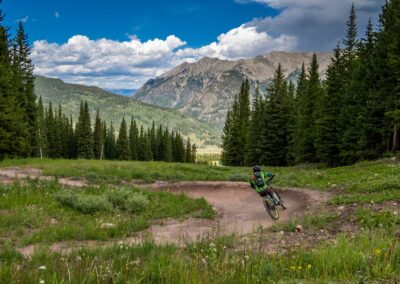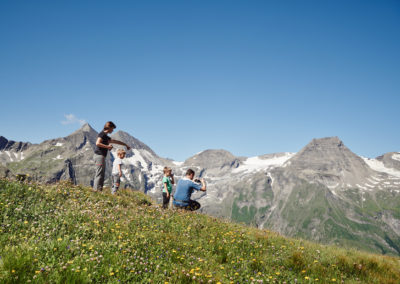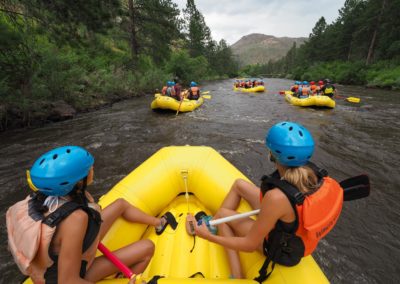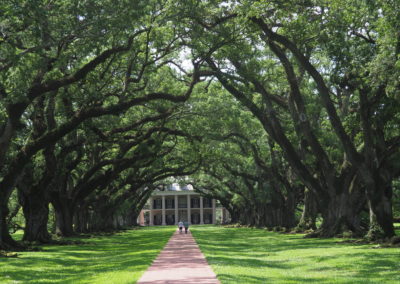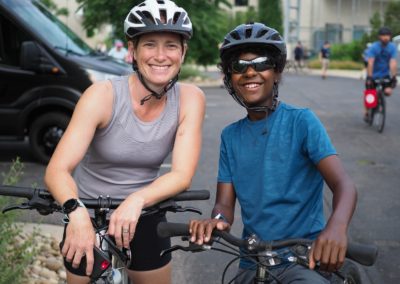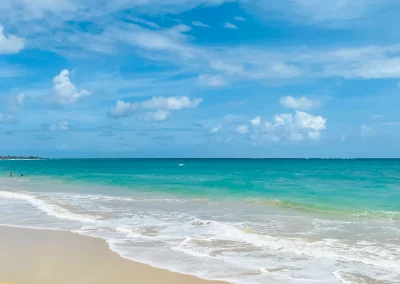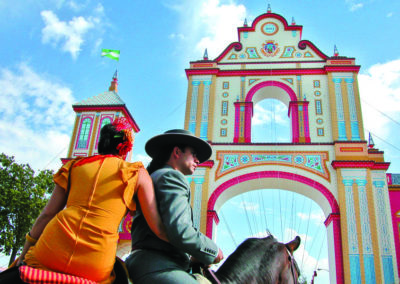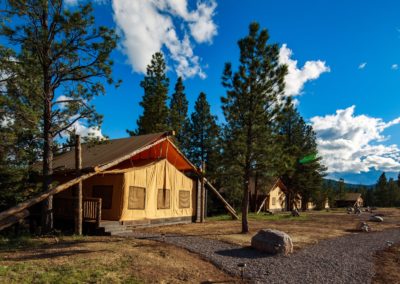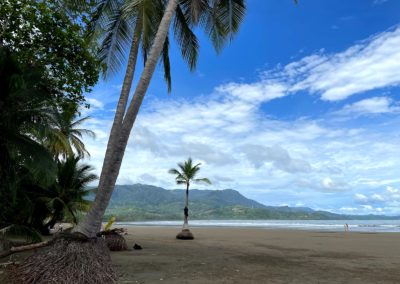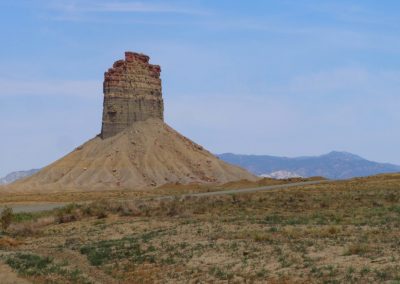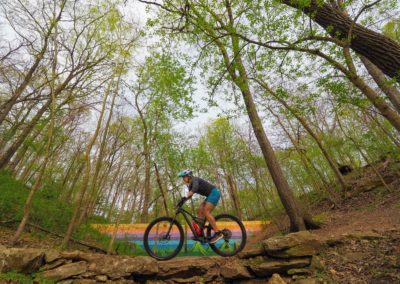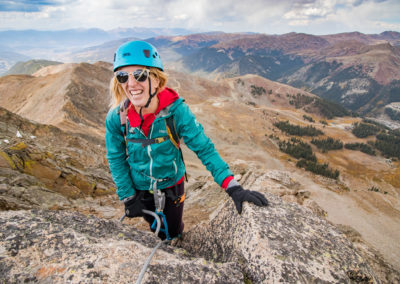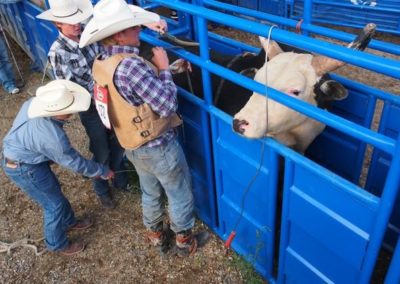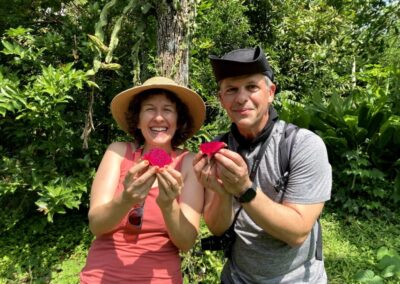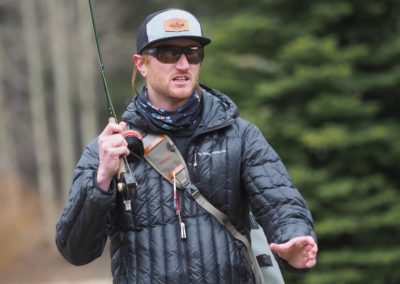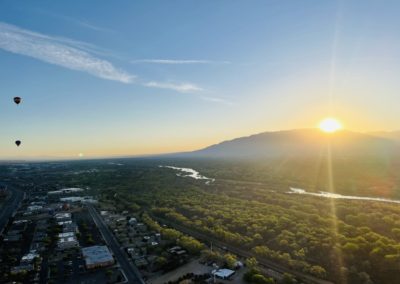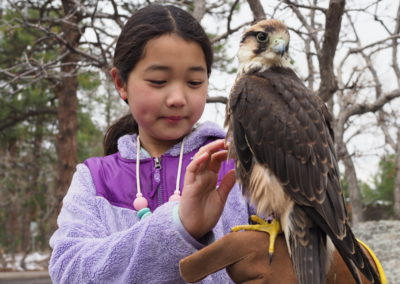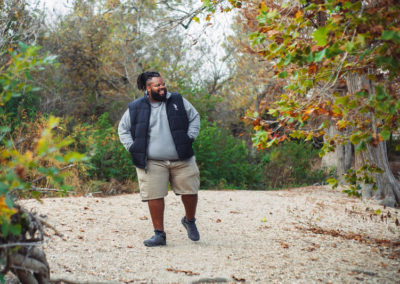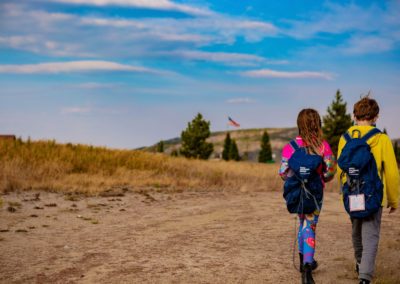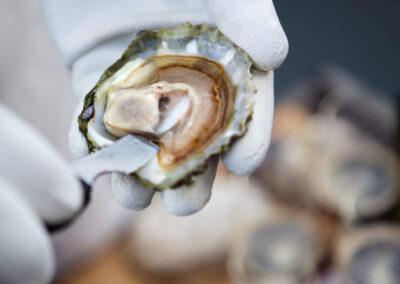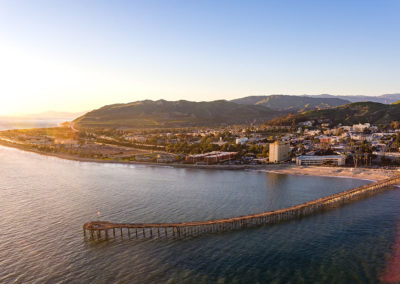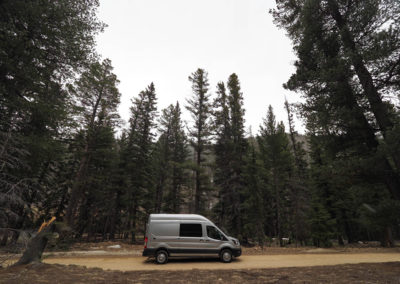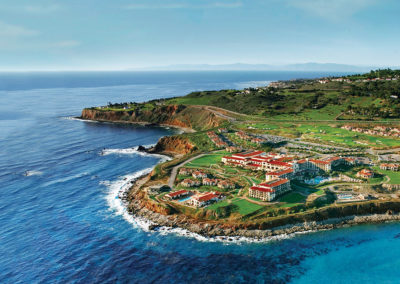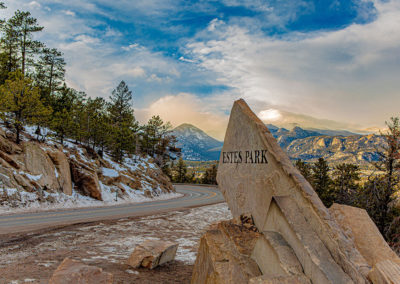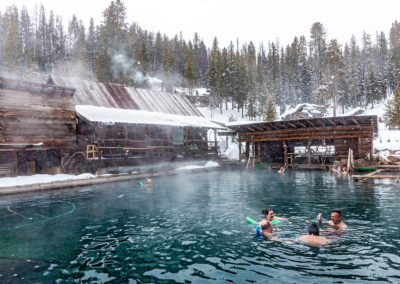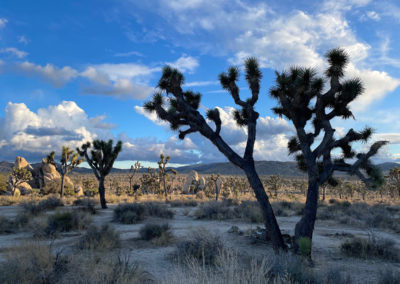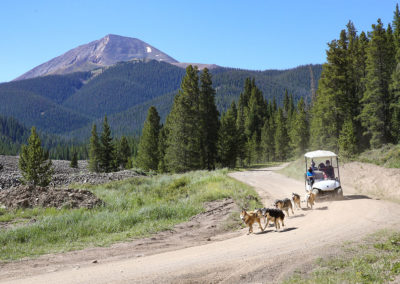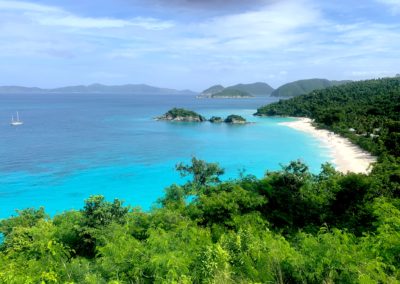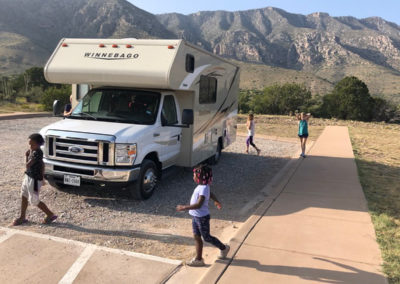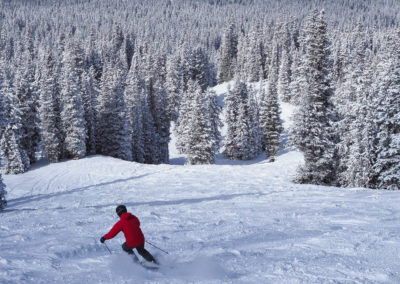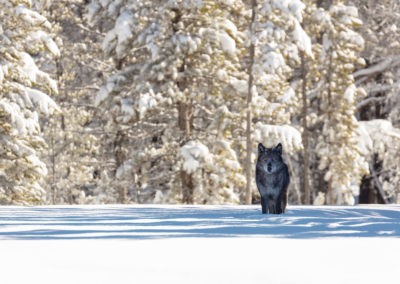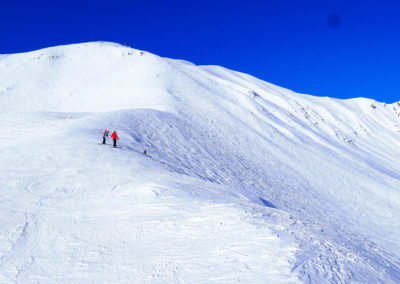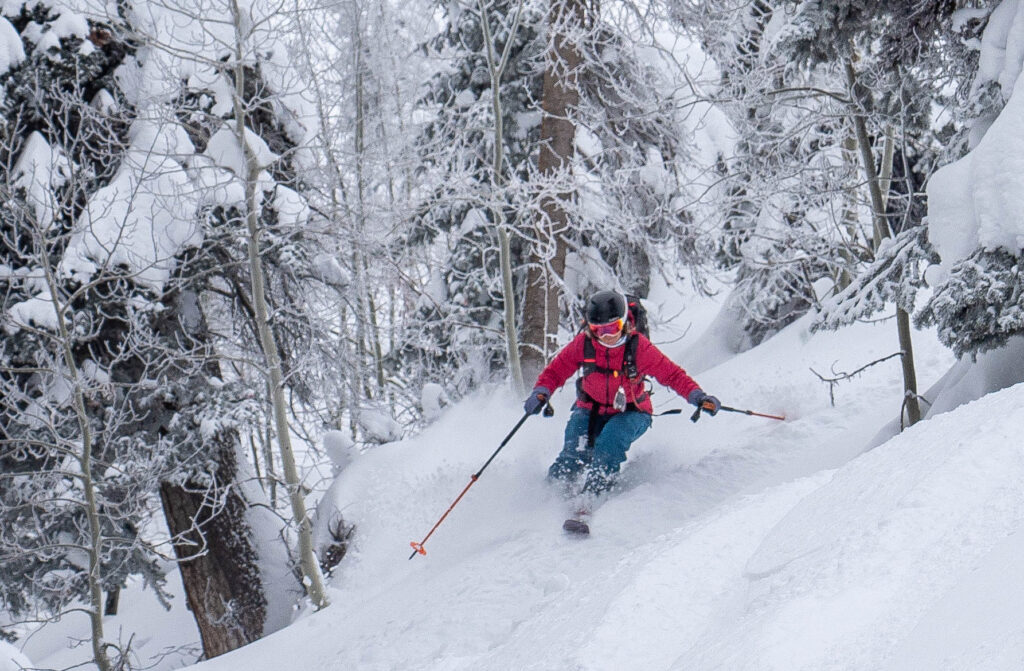
Treone Cooley skis through powder in the backcountry of the Sawtooth Mountains in Idaho. Pam LeBlanc photo
Back country skiing might seem absurd – people trudge up steep mountain slopes on skis or snowboards fitted with sticky “skins” that grip the snow. After a couple of hours of chugging up, they strip the skins off and glide down (hopefully) untouched, powder-filled slopes while carefully avoiding avalanche terrain.
It takes planning and teamwork, and there’s no guarantee of decent snow after all that effort. But the adventure, camaraderie and scenery suck people in. After six days of adventuring in the backcountry of the Sawtooth Mountains, I think I might be hooked.
“People are drawn to the sport because it gets you out of crowded resorts and into the real world,” says Richard Bothwell, a backcountry guide who helped lead a week-long “Intro to Backcountry Skiing” trip I attended in southern Idaho.
Intro to backcountry skiing
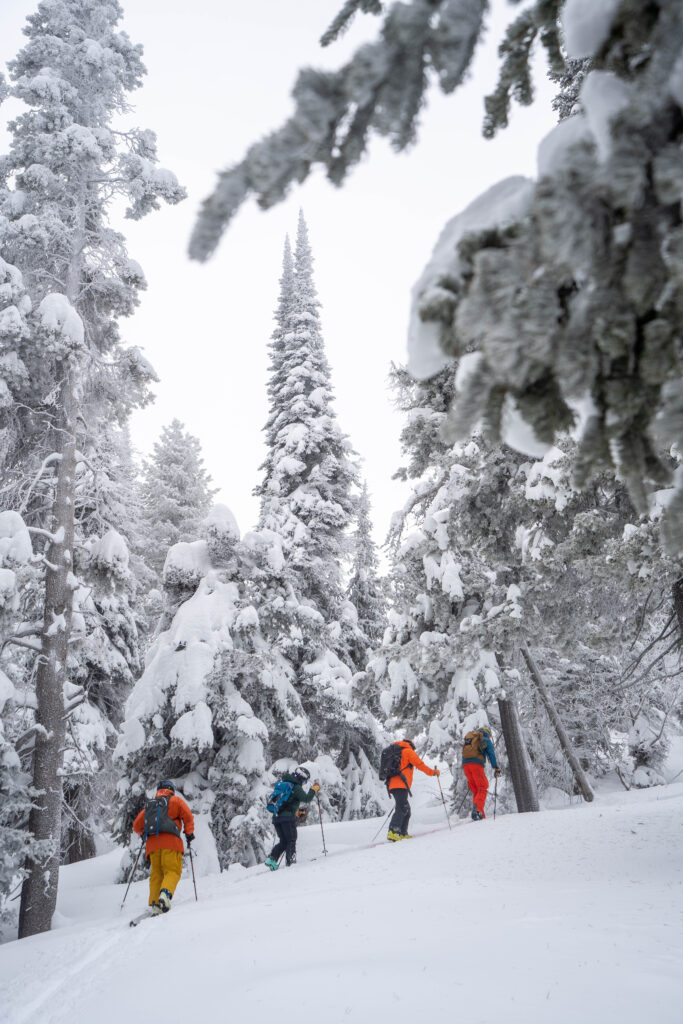
Backcountry skiers skin through the Sawtooth Forest in Idaho in January 2025. Pam LeBlanc photo
Our plan for the week is to learn the basics of the sport and how to mitigate the risks of avalanche and injury.
We set up base in Twin Falls, where we can easily explore terrain just outside the boundaries of three small nearby ski areas – Soldier Mountain, Magic Mountain Resort, and Pomerelle Mountain Resort.
But I’m a tad nervous. Less than two years ago, I fell while skiing and detached the ACL in my right knee. I had surgery to repair the injury and had to miss most of last season, but my doctor has given me permission to return to the slopes. Still, I wonder if I can handle the trip.
Read more: No matter the season, Banff serves up adventure
Alex Silgalis, co-founder of Local Freshies, which is hosting the event along with Ski Idaho, reassures me we won’t be tackling anything extreme. “It’s old man hippie pow,” he says, chuckling. After a week in the backcountry, he says, I’ll be spoiled for resort skiing.
We’re working with guides from Outdoor Adventure Club and Avalanche Science Guides to hone our avalanche safety skills. I’m issued an avalanche beacon so rescuers can find me in case of disaster, along with a shovel and probe so I can help search for others buried in snow if necessary.
Every morning, we gather over breakfast to discuss the day’s plan. We go over our route, what we’ll do if something goes wrong, and how to use terrain to reduce our risk. In this case, that means avoiding steep slopes and unstable snow. After each day of skiing, we’ll convene again, to talk about what goes right and what goes wrong.
“Teamwork and communication really make and break success in the backcountry,” Bothwell says.
Hazards of backcountry skiing
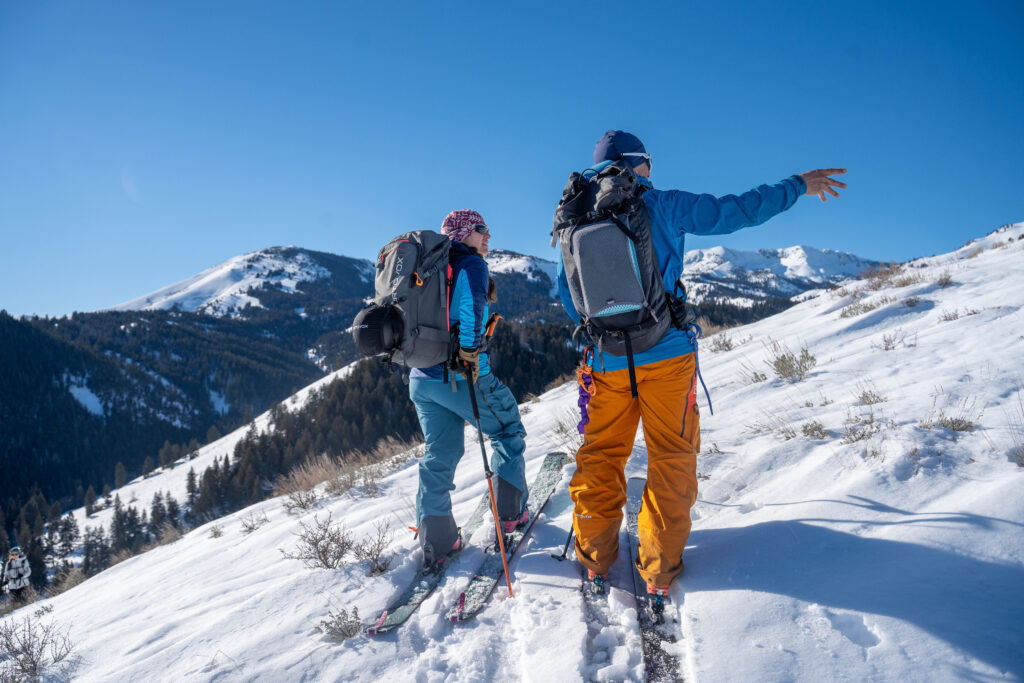
Treone Cooley and Chago Rodriguez, guides with Avalanche Science Guides, scout a slope in the backcountry of the Sawtooth Mountains near Soldier Mountain in Idaho. Pam LeBlanc photo
Avalanches aren’t the only dangers in the backcountry.
“Gear also breaks, and people get hurt and lost,” Bothwell says. “To be well prepared you need to know how to navigate back to safety. You need to be able to manage medical situations where people break legs and tear ACLs.”
And you need to trust your team. Before we head out, we agree that all decisions will be made by group consensus. If one person is uncomfortable or having a problem, we’ll all go back.
There is unstable snow in the snowpack out there, Bothwell tells us. That’s why we plan to stick to low angle slopes, where it’s impossible trigger an avalanche. We’ve got an inflatable sled along with a first-aid kit, too.
There is are no warming lodge in the backcountry, and skiers can’t make a quick trip to the bathroom for a pee break. (We ‘drop trou’ behind trees, hoping for a break in the wind gusts as we do our business.)
There aren’t many rules, either. You don’t need permission to ski on public land, and nobody checks to see if you have the necessary gear. An avalanche beacon could save your life, but nothing says you must carry one. And sometimes people let their desire to ski down a pristine slope affect their decision making.
“We’re still humans, we’re fallible and we do dumb human things,” says Bothwell, the former executive director of the American Institute for Avalanche Research and Education, a non-profit organization established in 1998 to prevent avalanche injuries and fatalities. “The problem is you want to ski when nature is telling you it’s not safe to be on slopes, and as humans, we sometimes get away with it.”
Sometimes, though, we don’t.
According to the Colorado Avalanche Information Center, 16 people died in avalanches in the United States during the 2023-24 season. Thirty died during the 2022-23 season, and 17 died the year before that. As of Jan 18, six had died this season.
Six days in the backcountry
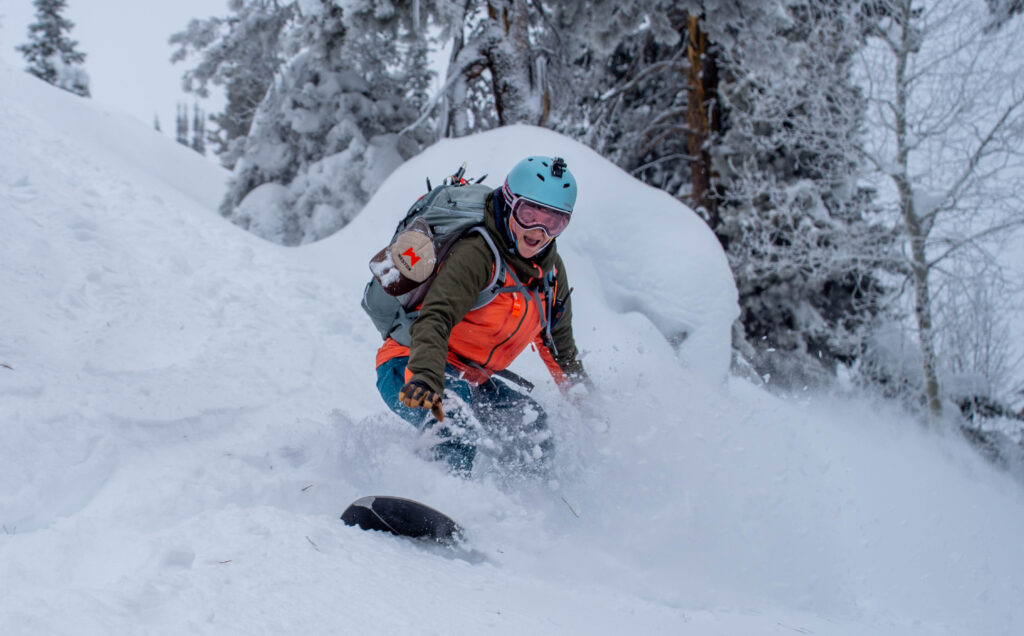
Jaime Pirozzi rides her snowboard down a snowy slope in the Sawtooth Mountains near Magic Mountain. Pam LeBlanc photo
Following good procedures, says Bothwell, who has taught avalanche safety for more than 20 years, slows us down so we make better decisions.
So do teammates who voice concerns when things get dicey.
We want to be smart and efficient, like the earth-bound version of the precision Blue Angels flight team, Bothwell tells us.
We attach the skins to our skis and head out.
Into the snow
During our six straight days of skiing, we experience all kinds of conditions. The first few days, the sun blazes down onto a shallow snowpack. Instead of a creamy field of white to schuss through as a grand reward, we get sage brush poking through a crusty layer of snow. Instead of big, soft swooshy turns, we punch through a surface that feels like a collapsing layer of potato chips.
Putting on and taking off the skins – especially at the top of a windy ridge – proves tricky. I feel like I’m handling giant strips of fly paper that keep sticking to my gloves. (Later Bothwell tells me the story of an acquaintance whose long hair got caught in her skins and had to be cut off.)
But conditions improve each day, and my knee holds up. Despite the challenges, I discover I love the feeling of heading away from a ski resort, into the wilderness.
I spot rabbit tracks and trees so caked in snow it looks like the landscape of Mars. It’s exhausting and exhilarating, and I struggle every time I transition from going uphill to going downhill.
I don’t feel like a Blue Angel yet, but I feel a little more confident each day.
A distant goal
On our last day, we plan to skin to Lake Cleveland, a scenic area a few hours’ skin from the top of Pomerelle. If conditions are right, we’ll find pillows of fluffy snow and plenty of terrain to make us whoop.
But not long after we leave the resort, clouds scud in, and the wind picks up. We forge on, slogging from one cluster of trees to the next. (Despite the knee-buckling breeze and temperatures in the teens, I felt relatively comfortable out in the elements.)
Read more: Raft through the deepest gorge in North America on Idaho’s Snake River
We hope that when we reach the other side of the ridge, we’ll have more protection. But that’s not how it works out. Conditions worsen. Trees bend like hula dancers, and snow blows so hard we have to follow each other closely, like ducklings.
After a few hours of trying to remain upright, our group gathers to discuss options. We’re disappointed, but we agree: We need to call it off and head back to the resort.
Lessons of backcountry skiing
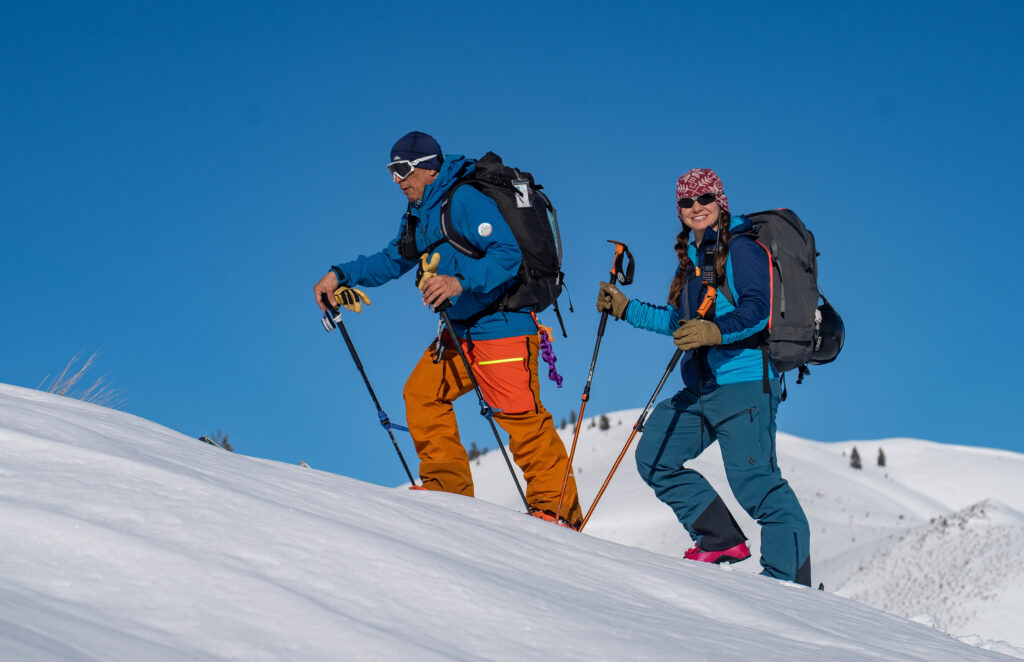
Chago Rodriguez and Treone Cooley skin up a slope in the Sawtooth Mountains of Idaho. Pam LeBlanc photo
Here’s the main thing I learned about backcountry skiing: It’s more about teamwork and camaraderie than the actual downhill skiing. It’s about the sense of discovery and adventure, and working with a team to safely access places not everybody gets to see.
Heading back to the resort, things feel suddenly different. Chairlifts whir, a cast-iron stove inside a warm lodge beckons. I feel like I’ve stepped back into a snow globe, where I know exactly what to expect.
It’s more comfortable, sure, but somehow not as exciting. It’s like Bothwell says – when you look back at the tracks you’ve made in the backcountry, you think about everything that went into making them.
“I nod, knowing tonight it’s going to snow, and those tracks will be gone,” he tells me. “No one will see them, there’s no glory. And tomorrow we’re going to go out and do it again.”
If You Go

Getting there:
Fly Delta into Twin Falls, Idaho.

Stay:
We set up home base for most of the trip at the Hilton Garden Inn in Twin Falls, located about an hour from Magic Mountain and an hour and 15 minutes from Pomerelle Mountain Resort. But we stayed one night at the Prairie Inn in the small town of Fairfield near Soldier Mountain.
Do:
Go backcountry skiing or take the lifts at one of the nearby ski resorts – Magic Mountain, Pomerelle Mountain Resort or Soldier Mountain.
Eat & Drink:
When in Fairfield, order the fish and chips (made with cod flown in fresh from Alaska because the owner used to work as an engineer on boats there). In Twin Falls, head to Elevation 486 for trout or prime rib and a gorgeous view. For breakfast, grab a stool at the counter and order the pancakes at Norm’s Café in Twin Falls. And don’t miss the French fries made fresh in the tiny lodge at the foot of Magic Mountain. After dinner, we got a craving for ice cream, despite the chilly temps. We got our fix at Stella’s in Twin Falls.

Pro Tip:
If you’re looking for lift tickets at any of the resorts, buy them in online in advance and look for deals. Depending on when you go, you can ski for less than $100 a day.







